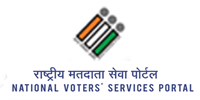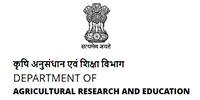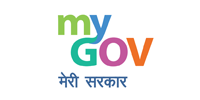Checklist for assessing women friendliness of agricultural technologies
Back ground
Introduction of technologies for development of farming community is a common agenda in almost all agricultural programs. However, technologies are rarely considered before its use for farmwomen. So, impact of the technology is felt differently on men and women. Gender issues and concerns are neither considered in development of technology nor are farmwomen involved during its inception. Rather being gender sensitive most of the available technologies are gender neutral. Hence, care should be taken to test the women friendliness of a technology before aiming women development through its introduction.
Technology description
This checklist follows a gender analysis framework and is intended to be comprehensive, flexible and adaptable. The checklist consists of 14 statements/items to be used as check while assessing women friendliness of agricultural technologies. The equal weightage is assigned to each statement/item in checklist. The checklist statements may be administered to the any agricultural technology/technology inventor on two point continuums, viz. Yes and No with the scores of 1 and 0, respectively. The overall possible maximum and minimum scores are 14 and 0, respectively. Thus, women friendliness value of each response/technology ranges from 0 to 1 i.e. when it is lowest, the score will be 0 and when it is highest, the score will be 1. The higher women friendliness value indicate greater women friendliness of technology. It is calculated by following formula;
Women Friendliness Value= (Obtained Score)/(Maximum Possible Score) = (Out of 14)/14
Use the following checklist for assessing women friendliness of agricultural technology:
| Sr. No. | Statements | Weigh-tage | Yes | No |
|---|---|---|---|---|
| 1 | Is it generated by considering the preferences of both the genders? | 1/14 | - | - |
| 2 | Does it consider physical parameters of both the genders? | 1/14 | - | - |
| 3 | Does it fulfil the location specific needs of both the genders? | 1/14 | - | - |
| 4 | Is it compatible with the existing socio-cultural climate of the society? | 1/14 | - | - |
| 5 | Is it easily accessible and affordable to both the genders? | 1/14 | - | - |
| 6 | Is it simple to understand by both farm men and women? | 1/14 | - | - |
| 7 | Is it easy to handle and operate by both farm men and women? | 1/14 | - | - |
| 8 | Is it efficient to reduce drudgery of both farm men and women? | 1/14 | - | - |
| 9 | Does it reduce workload of women? | 1/14 | - | - |
| 10 | Does it boost efficiency and productivity of both the genders? | 1/14 | - | - |
| 11 | Does it work with less and easily accessible inputs? | 1/14 | - | - |
| 12 | Is it adoptable with the existing skill of both the genders? | 1/14 | - | - |
| 13 | Is it flexible to get modified according to the needs of both gender? | 1/14 | - | - |
| 14 | Is it having potential of contributing to any livelihood component of farm men and women? | 1/14 | - | - |
How it is women friendly?
It ensures the effective development of women friendly agricultural technologies.
Performance:
It can be tested with any agricultural technologies.
Locale of dissemination/ application:
Agricultural technologies
Outcomes/impact/benefits:
More women friendly agricultural technology will be developed
Limitations if any
It requires suitable modification based on the type of agricultural technologies
Photos
Nil
Source (author/organization):
Mishra, S., Sarkar, A., Sahoo, L. P., Moharana, G. and Argade, S. D. ICAR-Central Institute for Women in Agriculture, Bhubaneswar, Odisha
Developed/tested/refined:
Developed and tested
Year and purpose:
2017; To assess women friendliness of agricultural technologies
Cost:
Contingency: Nil
Patent/Commercialization:
Nil
Weather further study/ modification are required or not:
Yes, needs further modification based on type of agricultural technologies.
- Back to previous page
- |
-
Page last updated date:31-05-2024 12:42 PM
 भारत सरकार | Government of India
भारत सरकार | Government of India









